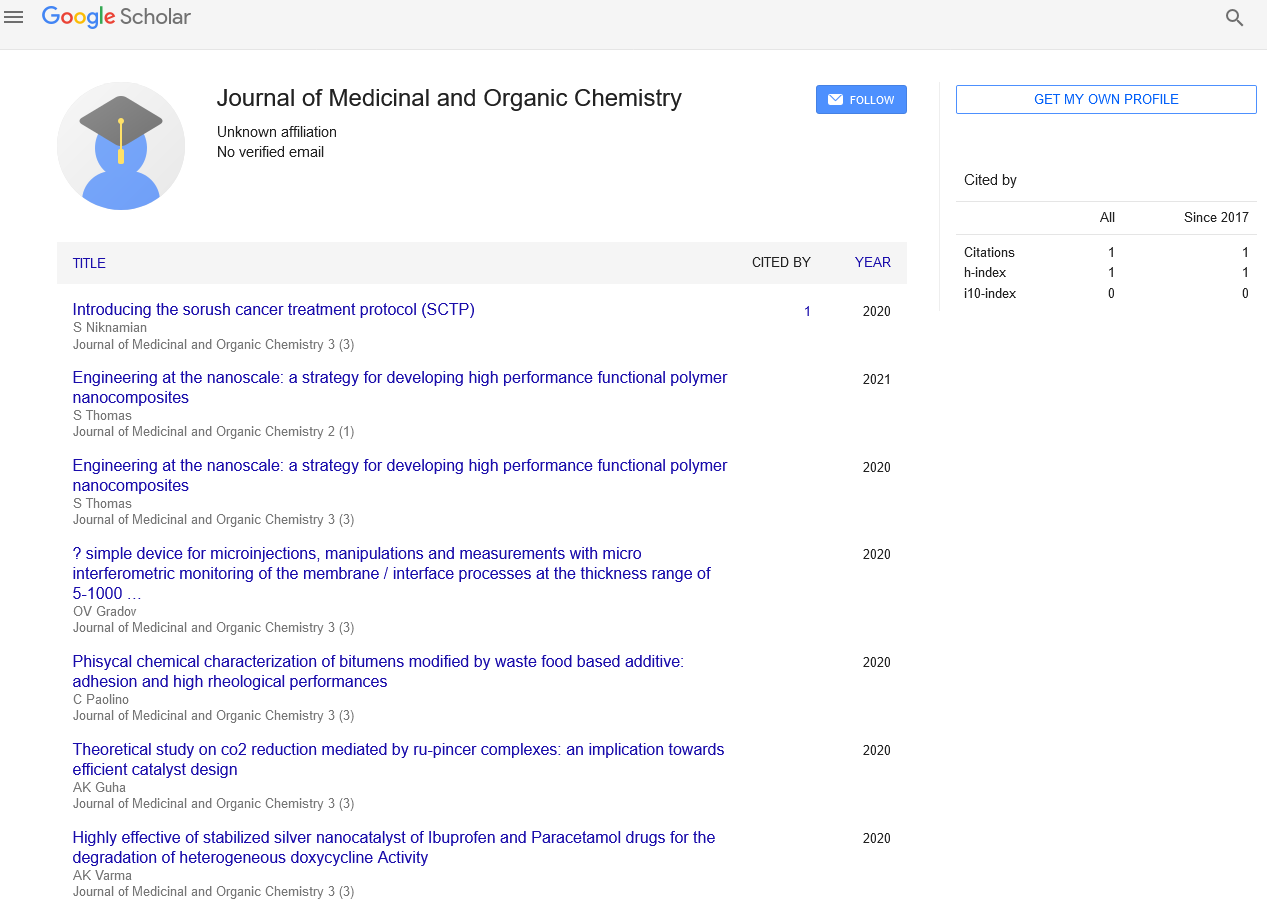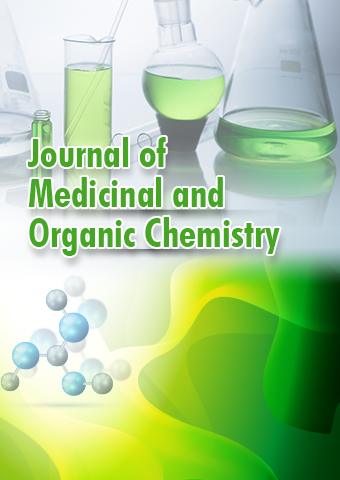Perspective - Journal of Medicinal and Organic Chemistry (2024) Volume 7, Issue 6
Molecular Docking in Organic Chemistry: Unveiling the Interactions at the Molecular Level
- Corresponding Author:
- Chloe Sarnowski
Department of Organic Chemistry,
University of Walee,
Vanderbijlpark,
South Africa
E-mail: Chloe.Sarnowski@u.tmc
Received: 03-Jul-2024, Manuscript No. JMOC-24-140627; Editor assigned: 08-Jul-2024, PreQC No. JMOC-24-140627 (PQ); Reviewed: 22-Jul-2024, QC No. JMOC-24-140627; Revised: 02- Dec-2024, Manuscript No. JMOC-24-140627 (R); Published: 30-Dec-2024, DOI: 10.37532/jmoc.2024.7(6).273-274
Introduction
In the realm of organic chemistry, where molecules dance to the tunes of bonding and interaction, molecular docking emerges as a pivotal tool. It provides a virtual stage where molecules of interest engage in intricate choreography, revealing insights crucial for drug design, enzyme mechanism elucidation and understanding molecular recognition processes. This article delves into the fundamentals, applications and future prospects of molecular docking, exploring how it enhances our understanding of organic chemistry.
Description
Understanding molecular docking
At its core, molecular docking is a computational method used to predict how molecules interact with each other. It simulates the preferred orientation and binding affinity between two molecules to form a stable complex. This method is particularly useful in organic chemistry, where understanding the spatial arrangement of molecules and their binding sites can unlock pathways for drug discovery and chemical synthesis.
Key concepts in molecular docking
Ligands and receptors: In molecular docking, one molecule is considered the ligand (e.g., a drug candidate) and the other is the receptor (e.g., a protein target). The goal is to predict how the ligand binds to the receptor, typically focusing on key interaction sites such as active sites or binding pockets.
Scoring functions: To assess the strength of binding between a ligand and receptor, scoring functions are employed. These functions evaluate factors like hydrogen bonding, van der Waals forces, electrostatic interactions and solvation effects to predict the binding affinity and stability of the complex.
Search algorithms: Molecular docking algorithms use various search strategies to explore the vast conformational space of possible ligand-receptor orientations. Techniques such as genetic algorithms, Monte Carlo simulations and molecular dynamics simulations are commonly used to find the optimal binding pose.
Applications of molecular docking
Drug discovery and design: Molecular docking plays a crucial role in drug discovery by helping researchers screen and optimize potential drug candidates. By virtually docking small molecules into protein targets involved in diseases, researchers can identify lead compounds that bind tightly and specifically to the target, thus showing therapeutic potential.
Enzyme mechanism elucidation: Understanding how enzymes interact with substrates is fundamental to organic chemistry. Molecular docking aids in elucidating enzyme mechanisms by predicting the binding modes of substrates or inhibitors. This knowledge is essential for designing enzyme inhibitors or optimizing enzyme-catalyzed reactions in industrial applications.
Molecular recognition: In fields like supramolecular chemistry and materials science, molecular docking helps predict and understand non-covalent interactions between molecules. This insight is crucial for designing molecular sensors, catalysts and materials with specific properties based on molecular recognition principles.
Challenges and future directions
Despite its utility, molecular docking faces several challenges. One significant limitation is the accuracy of scoring functions, which estimate the binding affinity between ligands and receptors. Improving these functions remains an active area of research to enhance the reliability of docking predictions. Despite its advancements, molecular docking faces several challenges. Predicting accurate binding poses and affinities remains a complex task due to the dynamic nature of molecules and solvent effects.
Improving scoring functions and incorporating more accurate energy calculations are ongoing areas of research. The future of molecular docking in organic chemistry is promising. Advances in machine learning and artificial intelligence are revolutionizing docking algorithms, enabling more accurate predictions and expanding the scope of applications. Researchers are also exploring the integration of docking with other computational techniques, such as quantum mechanics, to achieve greater precision in modeling molecular interactions.
Integration with experimental techniques: Combining molecular docking with experimental methods such as X-ray crystallography and NMR spectroscopy enhances the accuracy of predictions and validates computational models.
Machine learning and AI: The application of machine learning algorithms to molecular docking holds promise for improving prediction accuracy and efficiency, particularly in large-scale virtual screening campaigns.
Dynamic simulations: Molecular dynamics simulations, which model the movement of atoms over time, are increasingly integrated with docking studies to capture the flexibility of molecules and predict binding kinetics.
Conclusion
Molecular docking stands as a cornerstone in modern organic chemistry, bridging theoretical insights with practical applications in drug discovery, enzyme mechanisms and molecular recognition. As computational power and algorithms evolve, so too will our ability to unravel the complexities of molecular interactions at the atomic level. The future holds exciting prospects for molecular docking, promising new breakthroughs in understanding and manipulating molecular structures for diverse scientific and industrial purposes.

